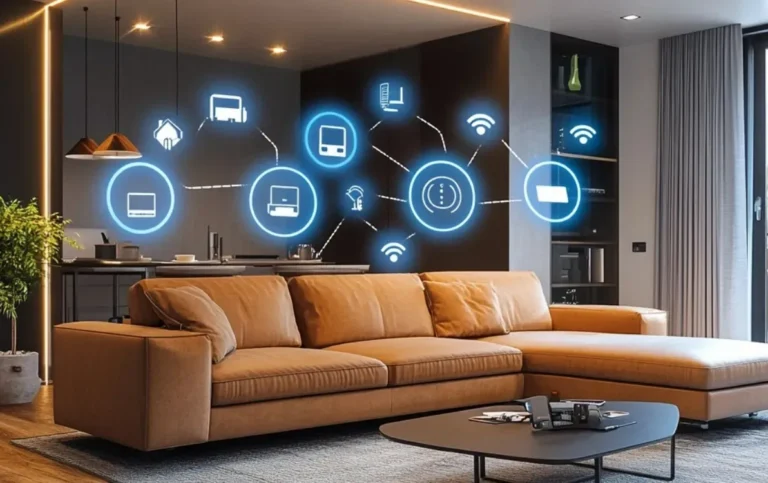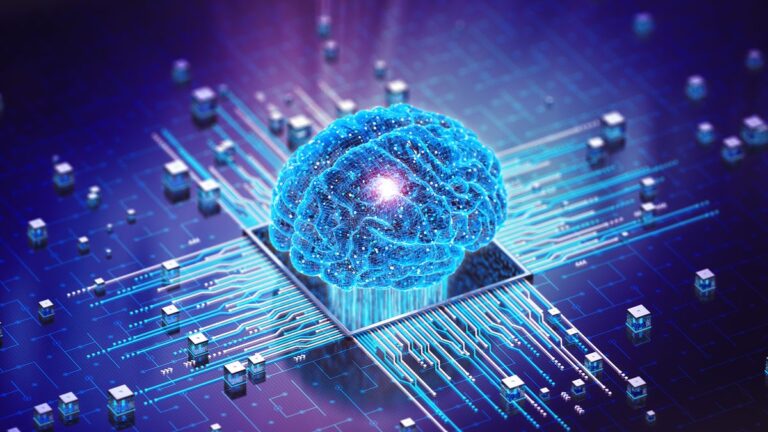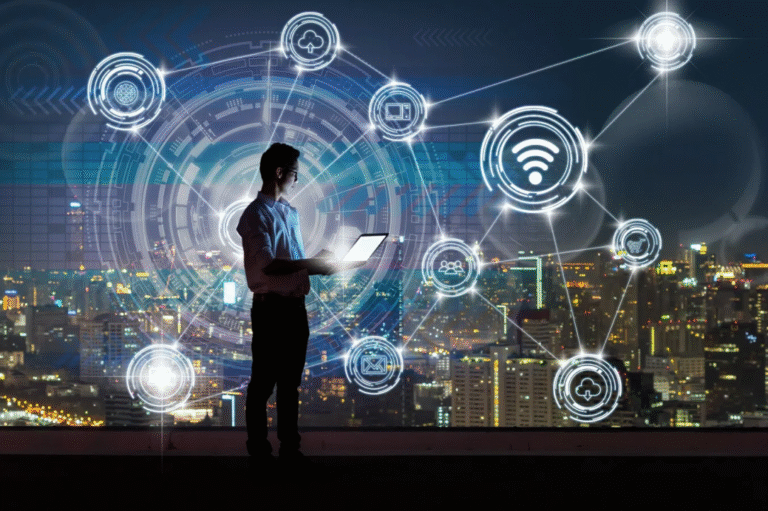Smart Technology Revolutionizing Our World
In an era where technology evolves at an unprecedented pace, smart technology stands out as a transformative force reshaping how we live, work, and interact with our environment. But what exactly is smart technology? At its core, smart technology refers to devices, systems, or environments that leverage advanced computing, connectivity, and artificial intelligence (AI) to operate autonomously or semi-autonomously, adapting to user needs with minimal human intervention. From smart homes to intelligent cities, these innovations are designed to enhance efficiency, convenience, and sustainability.
Smart technology integrates sensors, software, and connectivity—often through the Internet of Things (IoT)—to collect data, analyze it, and make informed decisions. Imagine a thermostat that learns your schedule and adjusts the temperature accordingly or a city traffic system that optimizes signals to reduce congestion. These are just glimpses of how smart technology is revolutionizing our world. In this article, we’ll delve into the applications, benefits, challenges, and future potential of smart technology, exploring why it’s more than just a buzzword—it’s a cornerstone of modern innovation.
The Building Blocks of Smart Technology
To understand smart technology, we must first look at its foundational components. These include:
-
- Sensors: These devices collect real-time data from the environment, such as temperature, motion, or light levels. For example, a smart doorbell uses motion sensors to detect visitors.
- Connectivity: Technologies like Wi-Fi, Bluetooth, and 5G enable devices to communicate with each other and the cloud, forming interconnected networks.
- Artificial Intelligence: AI algorithms process data to make decisions, predict outcomes, or optimize performance. A smart speaker, for instance, uses AI to understand voice commands.
- Cloud Computing: Cloud platforms store and process vast amounts of data, enabling scalability and remote access for smart devices.
- User Interfaces: Intuitive apps or voice assistants allow users to interact seamlessly with smart systems.
Together, these components create systems that are not only responsive but also capable of learning and adapting. This adaptability is what makes smart technology so powerful, enabling it to cater to diverse industries and applications.
Applications of Smart Technology
Smart technology has permeated nearly every sector, transforming how we approach daily tasks and complex challenges. Here are some key areas where it’s making a significant impact:
1. Smart Homes
Smart homes are perhaps the most familiar application of smart technology. Devices like smart thermostats (e.g., Nest), lighting systems (e.g., Philips Hue), and security cameras (e.g., Ring) allow homeowners to control their environment remotely. These devices learn user preferences, optimize energy usage, and enhance security. For instance, a smart thermostat can reduce heating costs by adjusting temperatures when no one is home, while a smart lock can grant temporary access to a delivery person via a mobile app.
2. Healthcare
In healthcare, smart technology is revolutionizing patient care and medical research. Wearable devices like Fitbit or Apple Watch monitor heart rates, sleep patterns, and activity levels, providing real-time health insights. Smart implants, such as glucose monitors for diabetics, transmit data to doctors, enabling timely interventions. Additionally, AI-driven diagnostic tools analyze medical images to detect diseases like cancer with unprecedented accuracy, improving outcomes and reducing costs.

3. Transportation
The transportation sector is undergoing a radical transformation thanks to smart technology. Autonomous vehicles, such as those developed by Tesla or Waymo, rely on sensors, AI, and connectivity to navigate roads safely. Smart traffic management systems use real-time data to optimize traffic flow, reducing congestion and emissions. In logistics, smart fleets equipped with IoT devices track shipments, optimize routes, and predict maintenance needs, boosting efficiency.
4. Smart Cities
Smart cities integrate technology to enhance urban living. From intelligent waste management systems that optimize collection routes to smart grids that balance energy distribution, these innovations promote sustainability and efficiency. For example, Singapore’s Smart Nation initiative uses sensors and AI to monitor everything from traffic to air quality, creating a more livable urban environment.
5. Industry and Manufacturing
In manufacturing, smart technology drives the concept of Industry 4.0. Smart factories use IoT sensors and AI to monitor equipment, predict failures, and streamline production. For instance, predictive maintenance systems can detect anomalies in machinery before they cause downtime, saving millions in repair costs. Additionally, smart supply chains use real-time data to optimize inventory and reduce waste.
Benefits of Smart Technology
The widespread adoption of smart technology brings numerous benefits that enhance quality of life and drive progress:
- Efficiency: Smart devices automate routine tasks, saving time and resources. For example, smart irrigation systems water crops only when necessary, conserving water.
- Convenience: Voice assistants like Alexa or Google Assistant simplify tasks, from setting reminders to controlling home appliances.
- Sustainability: Smart technology promotes eco-friendly practices, such as energy-efficient lighting and optimized logistics, reducing carbon footprints.
- Safety and Security: Smart surveillance systems and AI-driven threat detection enhance safety in homes, workplaces, and public spaces.
- Data-Driven Insights: By analyzing vast amounts of data, smart systems provide actionable insights, from personalized health recommendations to urban planning strategies.
These benefits collectively contribute to a more connected, efficient, and sustainable world, making smart technology a catalyst for positive change.
Challenges and Concerns
Despite its promise, smart technology is not without challenges. Addressing these concerns is critical to ensuring its responsible and equitable adoption:
- Privacy: Smart devices collect vast amounts of personal data, raising concerns about surveillance and data breaches. For instance, smart speakers may inadvertently record private conversations.
- Security: Connected devices are vulnerable to cyberattacks. A hacked smart home system could allow intruders to control locks or cameras.
- Interoperability: With countless manufacturers producing smart devices, compatibility issues can arise, making it difficult for devices to work together seamlessly.
- Digital Divide: Access to smart technology is uneven, with underserved communities often lacking the infrastructure or resources to benefit fully.
- Environmental Impact: The production and disposal of smart devices contribute to electronic waste, posing environmental challenges.
Addressing these issues requires robust regulations, ethical design practices, and public awareness to ensure smart technology serves the greater good without compromising privacy or equity.
The Future of Smart Technology
As we look to the future, smart technology is poised to become even more integrated into our lives. Emerging trends include:
- AI Advancements: More sophisticated AI models will enable smarter, more autonomous systems, from self-driving cars to AI-powered personal assistants.
- 5G and Beyond: Faster, more reliable networks will enhance connectivity, enabling real-time communication for billions of devices.
- Edge Computing: Processing data closer to the source (e.g., on devices rather than the cloud) will reduce latency and improve efficiency.
- Sustainable Innovations: Smart technology will play a key role in combating climate change, with solutions like smart grids and carbon-monitoring systems.
- Human-Machine Collaboration: Augmented reality (AR) and virtual reality (VR) will merge with smart technology to create immersive, collaborative environments.
The future of smart technology is not just about smarter devices but about creating ecosystems that empower individuals, communities, and societies. By addressing current challenges and leveraging emerging trends, smart technology can pave the way for a more connected and sustainable world.
Conclusion
Smart technology is more than a collection of gadgets—it’s a paradigm shift that’s redefining how we interact with the world. From enhancing daily conveniences to tackling global challenges like climate change and healthcare access, its potential is vast. However, realizing this potential requires careful consideration of privacy, security, and equity. As we stand on the cusp of a smarter future, the choices we make today—about how we design, deploy, and regulate smart technology—will shape the world of tomorrow. Embracing its possibilities while addressing its challenges will ensure that smart technology truly serves humanity’s best interests.






